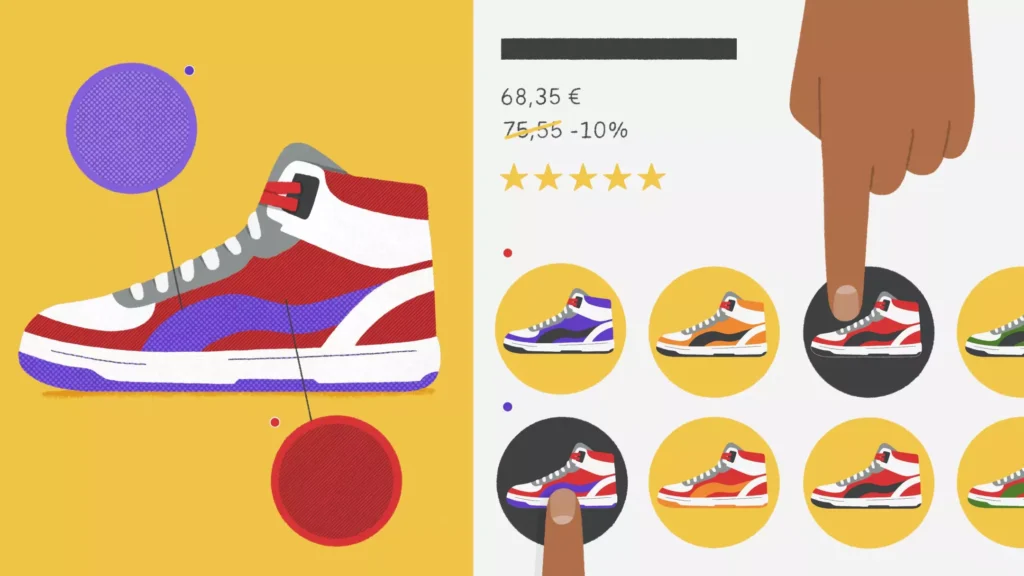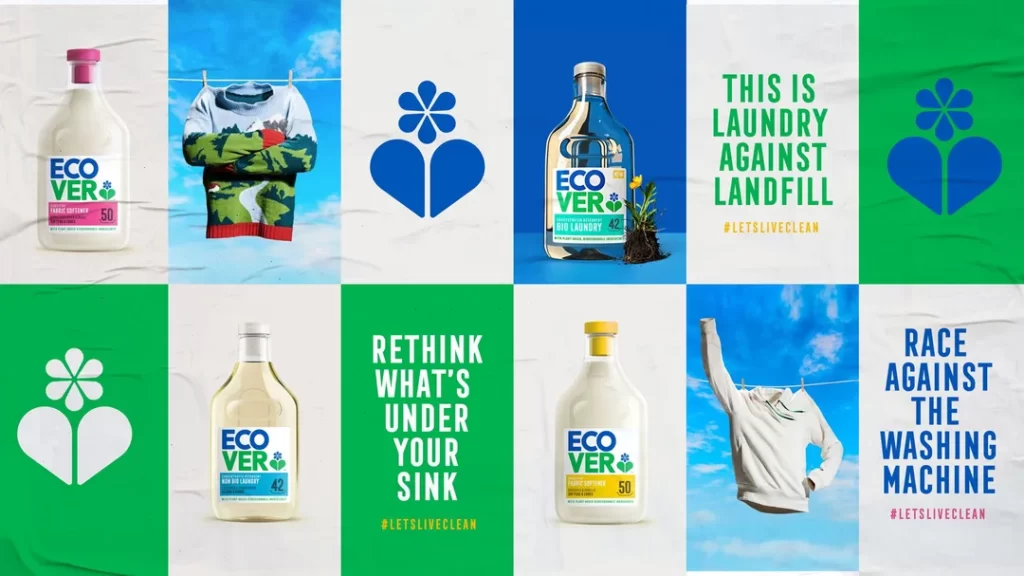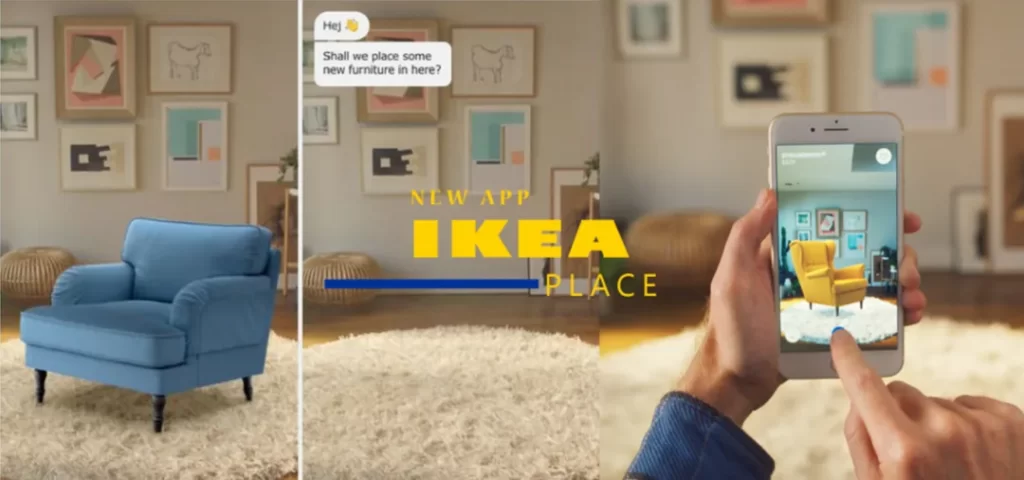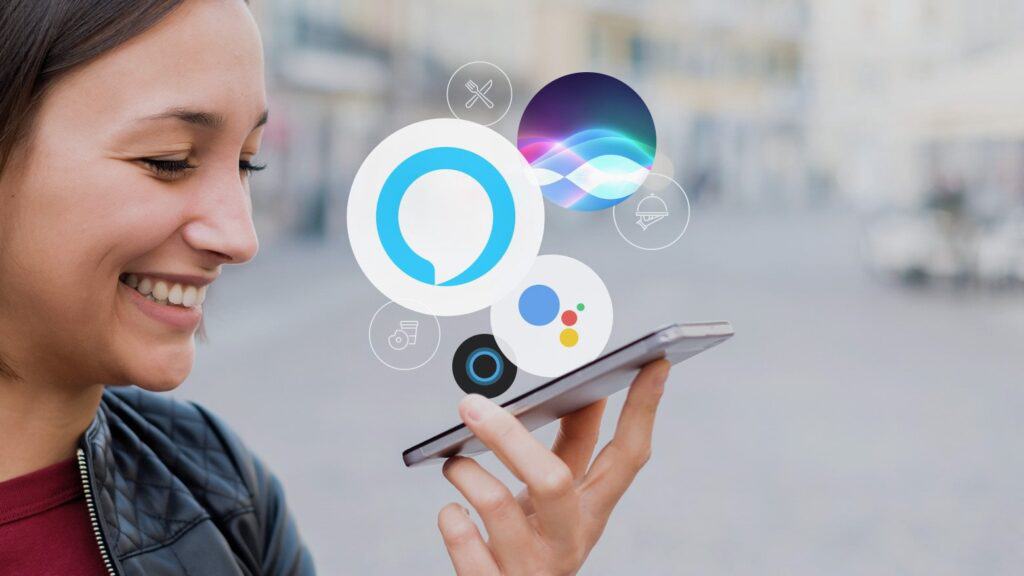Top 9 Branding Trends to Watch Out for
Branding has become critical to business success in an era of rapid technological advancements and shifting consumer behaviours. Branding is no longer just about creating a catchy logo or tagline; it extends to the entire customer experience, from the first point of contact to the post-purchase interaction. This involves every aspect of a brand's communication, from design and messaging to customer service and product delivery.
Staying updated with the latest branding trends is not just important; businesses must remain competitive and relevant. In a saturated market, brands that fail to evolve and adapt risk being overshadowed by more innovative and forward-thinking competitors. By staying abreast of emerging branding trends, companies can anticipate changes, make strategic decisions, and shape their branding strategies to meet evolving consumer expectations.
In the digital age, brands have numerous platforms and tools to connect with consumers and create meaningful brand experiences. From social media and content marketing to AI-driven personalisation and immersive technologies like AR and VR, brand engagement and innovation opportunities are virtually limitless. However, leveraging these tools and trends requires a deep understanding of the current branding landscape and a vision for the future.
Table of Contents
Personalisation and Customisation in Branding

In the age of digital transformation, consumers are inundated with information and advertisements. Amidst this noise, personalised and customised brand experiences stand out. Personalisation and customisation in branding involve tailoring a brand's messaging, products, services, and customer interactions to meet individual needs and preferences.
Personalised experiences can foster a deep, meaningful connection with the audience, making them feel valued and understood. Brands delivering personalised experiences are more likely to capture consumer attention, build trust, and cultivate customer loyalty. This is especially relevant in 2024, as businesses strive to differentiate themselves from competitors and build strong customer relationships.
Personalisation and customisation can be implemented in various ways, depending on a brand's industry, target audience, and available resources. For instance, e-commerce platforms like Amazon use AI and machine learning algorithms to analyse customer data and provide personalised product recommendations. This enhances the shopping experience and increases the likelihood of purchases.
Likewise, companies like Nike allow customers to customise their products, reflecting their style and preferences. This level of personalisation enhances customer satisfaction and reinforces the brand's positioning as customer-centric and innovative. As we move towards 2024, brands that effectively implement personalisation and customisation strategies will be better positioned to create meaningful connections with their audience and achieve business success.
Sustainability and Eco-conscious Branding

With growing concern over environmental issues and social inequality, sustainability and eco-consciousness have become significant factors in consumers' purchasing decisions. Brands that demonstrate a commitment to sustainability and social responsibility are likelier to win consumer trust and loyalty.
In the future of branding, sustainability and eco-consciousness are not just trends but essential principles that guide business decisions and strategies. Brands that integrate sustainability into their operations, products, and communications can align themselves with consumer values, differentiate themselves from competitors, and contribute positively to society.
Embracing sustainability goes beyond merely reducing environmental impact or complying with regulations. It involves a holistic approach that considers all aspects of a business, from sourcing and production to distribution and waste management. Moreover, it requires transparency and authenticity in communicating a brand's sustainability efforts and achievements.
For instance, Patagonia, an outdoor clothing brand, is renowned for its commitment to sustainability and social responsibility. The company uses environmentally friendly materials and practices and actively promotes environmental activism. By doing so, Patagonia has built a strong brand identity that resonates with conscious consumers and sets the brand apart in a competitive market.
In the coming years, sustainability and eco-conscious branding will continue to be a significant trend. Brands that can successfully align with this trend by demonstrating genuine commitment and action will be well-positioned to succeed.
Influencer Marketing and Brand Collaborations

In the era of social media, influencer marketing has emerged as a powerful strategy for brand promotion. By collaborating with influencers, brands can tap into established audiences, increase brand visibility, and build credibility. Influencer marketing is particularly effective because it leverages the trust and rapport that influencers have built with their followers.
On the other hand, brand collaborations involve partnering with another brand to create a unique product or service. Such partnerships can boost brand visibility, bring in new audiences, and enhance brand perception. When two complementary brands collaborate, they can leverage each other's strengths, resulting in a product or service that provides more value to consumers.
In influencer marketing, a notable example is the collaboration between the cosmetics brand MAC and beauty influencer Patrick Starrr. The limited-edition makeup collection leveraged Starrr's influence in the beauty community to reach a wider audience and generate buzz in the market.
Similarly, collaborations between fashion brands and celebrities often result in limited-edition collections that generate consumer excitement. A classic example is the collaboration between Adidas and musician Kanye West, resulting in the trendy Yeezy line.
In addition to influencer marketing and brand collaborations, the growth of social commerce presents new opportunities for brands. Social media platforms are increasingly integrating shopping features, allowing consumers to discover and purchase products directly within the platform. This simplifies the shopping process and enables brands to reach consumers where they spend a significant portion of their time.
Augmented Reality and Virtual Reality in Branding

Integrating Augmented Reality (AR) and Virtual Reality (VR) in branding is a trend set to define 2024 and beyond. These technologies offer immersive, interactive experiences, enabling brands to engage audiences in novel and exciting ways.
AR and VR can transform how consumers interact with brands, allowing for more engaging and personalised brand experiences. For example, AR can create virtual try-on experiences, allowing consumers to visualise how a product would look on them without having to visit a physical store. Similarly, VR can create immersive virtual environments, such as virtual showrooms or tours, enhancing customer engagement and satisfaction.
IKEA, the Swedish furniture giant, has successfully leveraged AR to enhance its customer experience. The company's “IKEA Place” app allows users to visualise how various IKEA products look in their homes. This innovative use of AR enhances the shopping experience and helps build confidence in the brand and its products.
As we move towards 2024 and beyond, the potential applications of AR and VR in branding are vast. These technologies can create unique, memorable experiences that set a brand apart from its competitors. From virtual try-on experiences in fashion to virtual tours in real estate, AR and VR offer exciting opportunities for brands willing to embrace these emerging technologies.
Minimalistic and Simplistic Branding

In a world overwhelmed with information and visual stimuli, minimalistic branding has emerged as a trend that resonates with consumers. Minimalistic branding focuses on simplicity and clarity, both in design and messaging. By stripping away unnecessary elements and focusing on the essentials, brands can create a sense of calm and clarity that stands out amidst the noise.
Minimalistic branding is not just about aesthetics; it's also about conveying a brand's core values and purpose most straightforwardly. This can involve minimalist colour palettes, clean lines, ample whitespace in design, or clear, concise messaging that cuts through the fluff and gets to the heart of what a brand is about.
Minimalistic and purposeful logos are a crucial part of this trend. Many successful brands have adopted minimalist logo designs that convey elegance, sophistication, and timelessness. Apple's iconic logo, for instance, is a study in minimalist design. Its simplicity and elegance have made it one of the world's most recognisable logos.
As we move towards 2024, minimalistic branding is set to remain a significant trend. In an increasingly cluttered and complex world, the simplicity and clarity of minimalist branding offer a breath of fresh air. Brands implementing minimalistic branding strategies will be better positioned to capture audience attention and convey their core values and purpose.
Storytelling and Emotional Branding

In an age of information overload, storytelling has emerged as a powerful branding strategy. A compelling story can cut through the noise, capture the audience's attention, and create an emotional connection with a brand. Good storytelling can evoke emotions, inspire action, and make a brand more relatable and memorable.
Brand narratives that create emotional connections with the audience profoundly impact brand perception and loyalty. By telling authentic, human stories that resonate with consumers' experiences, values, and aspirations, brands can create a deeper level of engagement and forge a stronger bond with their customers.
For instance, Coca-Cola's holiday campaigns, such as the “Holidays Are Coming” advertisements, create a sense of nostalgia and joy. These campaigns tell an emotional story that connects with the audience's experiences and emotions, reinforcing the brand's positioning as a purveyor of happiness and good times. Social media is transforming into a search engine and a platform for brand discovery.
In addition to traditional forms of storytelling, brands are increasingly leveraging digital platforms and technologies to tell their stories. From social media posts and videos to immersive technologies like AR and VR, brands have many tools to create engaging, memorable brand narratives. As we move towards 2024, brands that can effectively leverage storytelling will be better positioned to engage their audience and build a strong brand identity.
Voice and Sonic Branding

In a world increasingly dominated by voice-activated devices and smart speakers, voice and sonic branding have emerged as significant trends. These involve leveraging voice and sound to create a unique, recognisable brand identity.
Voice branding involves creating a distinct voice and tone for a brand's audio content, such as advertisements, voice-activated assistants, or customer service interactions. Sonic branding, conversely, involves creating a unique sound or jingle that becomes associated with a brand.
For instance, Intel's four-note jingle is a classic example of sonic branding. This simple yet catchy jingle is instantly recognisable and has become synonymous with the Intel brand.
As voice-activated devices become more mainstream, brands need to consider how their brand sounds and how it can create a cohesive and consistent experience across different platforms and touchpoints. Advancements in technology, particularly in artificial intelligence, offer exciting opportunities for brands to create memorable and immersive voice and sonic experiences.
Looking towards 2024, voice and sonic branding will continue to be significant trends. Brands that effectively leverage these trends will be better positioned to create a unique, memorable brand identity that resonates with their target audience.
Authenticity and Transparency in Branding

In an age of scepticism and distrust, authenticity and transparency have become crucial for building consumer trust and credibility. Brands that demonstrate authenticity and transparency in their operations, communications, and consumer interactions are likelier to win consumer trust and loyalty.
Authenticity involves staying true to a brand's values and purpose, being genuine in communications, and delivering on promises. Conversely, transparency involves being open and honest about business practices, product sourcing, and potential risks or controversies. Brands prioritising authenticity and transparency can cultivate long-term loyalty and build a strong foundation of trust with their customers.
A brand that exemplifies authenticity and transparency is Patagonia. The company is open about its commitment to sustainability, regularly updating consumers on its efforts to reduce its environmental impact and promote social justice. This openness and honesty have helped Patagonia build a robust and loyal customer base that shares its values.
In addition to authenticity and transparency, privacy-centric marketing practices are gaining importance. With growing concerns about data privacy and security, brands prioritising data protection and respecting user privacy can build trust and differentiate themselves from competitors. By being transparent about data collection and actively addressing privacy concerns, brands can establish themselves as trustworthy and responsible.
Mobile-first Branding Strategies

With the proliferation of smartphones and mobile devices, designing brand experiences for mobile devices is more critical than ever. Mobile-first branding involves creating websites, apps, and content with mobile users in mind, ensuring a seamless, user-friendly experience on mobile devices.
A mobile-first approach is crucial for reaching a wider audience and meeting evolving consumer expectations. With consumers spending a significant portion of their time on mobile devices, brands delivering a superior mobile experience are more likely to capture consumer attention and drive engagement.
In addition to mobile-first design, the rise of streaming and connected TV (CTV) presents new opportunities for brands. As consumers increasingly shift towards streaming services and connected devices, brands can leverage these platforms to reach their target audience in new and engaging ways. By integrating their branding efforts across multiple platforms, brands can create a cohesive, consistent brand experience that resonates with their audience.
Looking towards 2024, mobile-first branding will continue to be a significant trend. Brands that can effectively implement mobile-first strategies will be better positioned to connect with their audience, drive engagement, and achieve business success in the digital age.
Conclusion: Embracing Branding Trends for Meaningful Digital Experiences
As we look towards 2024, it's clear that the world of branding is dynamic and ever-evolving. Brands anticipating and adapting to emerging trends will be better positioned to succeed. From personalisation and sustainability to influencer marketing and AR/VR, these trends offer exciting opportunities for brands to connect with their audience and create meaningful digital experiences.
Personalisation and customisation enable brands to connect with their audience on a deeper level, fostering loyalty and differentiation. Sustainability and eco-conscious branding align brands with consumer values and contribute to a more sustainable future. Influencer marketing and collaborations boost brand visibility and credibility, while AR and VR create immersive, engaging brand experiences. Minimalistic branding stands out in a cluttered digital landscape, while storytelling creates emotional connections with the audience. Voice and sonic branding create a unique, recognisable brand identity, and authenticity and transparency build trust and credibility. Lastly, a mobile-first approach ensures a seamless, user-friendly brand experience across devices.
As we move towards 2024, brands must embrace these trends and integrate them into their branding strategies. By doing so, they can create captivating, meaningful digital experiences that resonate with their audience, differentiate them from competitors, and drive long-term success. Embracing these trends is not just an option; it's necessary for brands aiming to thrive in the future of branding.
FAQs on Branding Trends
What is the most critical branding trend to focus on in the current market?
The rise of purpose-driven branding is one of the most crucial trends to watch out for. Consumers, especially younger generations, increasingly favour brands that align with their values and make a positive social or environmental impact.
How can brands leverage the metaverse and virtual reality for branding?
As the metaverse and virtual reality continue to gain traction, brands are exploring ways to create immersive, interactive experiences for their customers in these digital spaces. This can include virtual product showcases, branded virtual events, or even virtual storefronts.
What role does inclusive branding play in the current landscape?
Inclusive branding, which celebrates diversity and promotes representation, is becoming increasingly important. Brands that embrace inclusivity in their messaging, product offerings, and marketing campaigns are more likely to resonate with diverse audiences and build a loyal customer base.
How can brands effectively utilise user-generated content (UGC) in their branding efforts?
User-generated content (UGC) has become a powerful tool for brands to build authenticity and foster a sense of community. By encouraging and amplifying UGC, brands can leverage the credibility of real customers' experiences and create a more relatable brand identity.
What is the importance of sustainability and eco-friendly branding?
As consumers become more environmentally conscious, brands prioritising sustainability and eco-friendly practices are gaining a competitive edge. This can include using recyclable or biodegradable packaging, adopting eco-friendly manufacturing processes, or promoting environmental causes.
How can brands leverage influencer marketing effectively?
Influencer marketing has become a staple in the branding world, but partnering with influencers who align with your brand's values and target audience is crucial. Authenticity and transparency are essential to successful influencer collaborations.
What role does personalisation play in modern branding strategies?
Personalisation is becoming increasingly important as consumers expect tailored experiences. Brands can leverage data and technology to offer personalised products, services, or marketing messages that resonate with individual customers' preferences and behaviours.
How can brands effectively integrate storytelling into their branding efforts?
Storytelling has always been a powerful branding tool, but it's even more critical in today's content-driven world. Brands can use storytelling to create emotional connections with their audience, share their brand's values and mission, and stand out in a crowded market.
What is the role of experiential marketing in branding?
Experiential marketing, which focuses on creating immersive, memorable customer experiences, is becoming increasingly popular. This can include pop-up events, interactive installations, or branded experiences that allow customers to engage with the brand tangibly.
How can brands effectively balance tradition and innovation in their branding strategies?
While innovation is crucial for staying relevant and appealing to modern audiences, it's also essential for brands to preserve their core values and heritage. Finding the right balance between tradition and innovation can help brands maintain their authenticity while evolving.
